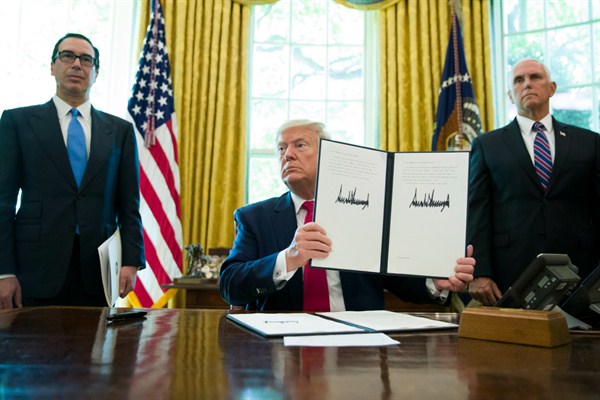Editor’s Note: Guest columnist Neil Bhatiya is filling in for Judah Grunstein this week.
Escalating tensions in the Persian Gulf peaked last week when President Donald Trump abruptly canceled U.S. airstrikes against Iranian military assets, after Iran shot down an unmanned American surveillance drone over the Gulf of Oman. Trump’s ordering of military strikes, only to change his mind apparently at the last moment, has raised more questions about the administration’s strategy toward Iran and its ultimate goals. Trump’s decision to call off the airstrikes seemed to indicate that he doesn’t see a military solution to this growing crisis, even though that view was thrown for a loop Tuesday when Trump warned on Twitter that “Any attack by Iran on anything American will be met with great and overwhelming force. In some areas, overwhelming will mean obliteration.”
It still isn’t clear what Trump really wants from Iran, or how he aims to achieve it. Immediately before the aborted airstrikes, the Trump administration’s preferred strategy seemed to be summed up in the testimony of the State Department’s Iran envoy, Brian Hook, to a House subcommittee on June 19. As Hook told lawmakers, an aggressive campaign of U.S. sanctions would deprive Iran of the revenue needed to finance its “malign activity” in the Middle East, raise the economic pain for the Iranian leadership, and eventually force the regime to come to the negotiating table to discuss Secretary of State Pompeo’s long list of demands that Iran change its international behavior.

